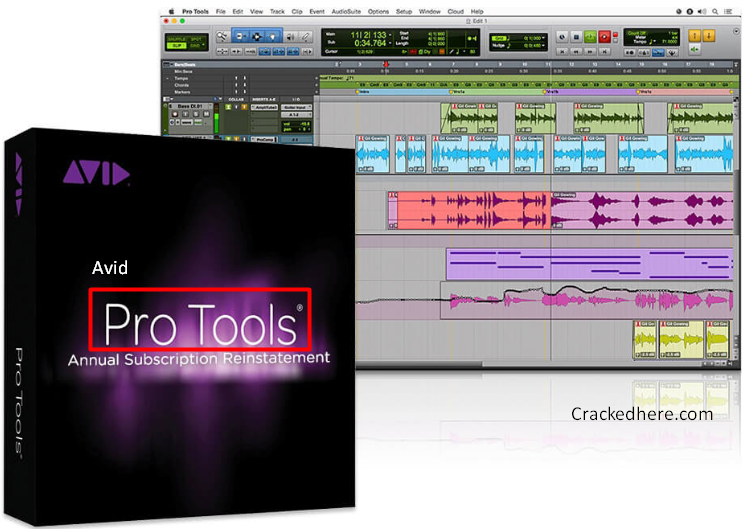
- PRO TOOLS 12 MAC OS MOJAVE MAC OS X
- PRO TOOLS 12 MAC OS MOJAVE MAC OS
- PRO TOOLS 12 MAC OS MOJAVE PRO
- PRO TOOLS 12 MAC OS MOJAVE CODE
- PRO TOOLS 12 MAC OS MOJAVE DOWNLOAD
This purchase also led to Steve Jobs returning to Apple as an interim, and then the permanent CEO, shepherding the transformation of the programmer-friendly OPENSTEP into a system that would be adopted by Apple's primary market of home users and creative professionals. This led Apple to purchase NeXT in 1996, allowing NeXTSTEP, then called OPENSTEP, to serve as the basis for Apple's next generation operating system.
PRO TOOLS 12 MAC OS MOJAVE MAC OS
Throughout the early 1990s, Apple had tried to create a "next-generation" OS to succeed its classic Mac OS through the Taligent, Copland and Gershwin projects, but all were eventually abandoned. Its graphical user interface was built on top of an object-oriented GUI toolkit using the Objective-C programming language.
PRO TOOLS 12 MAC OS MOJAVE CODE
The kernel of NeXTSTEP is based upon the Mach kernel, which was originally developed at Carnegie Mellon University, with additional kernel layers and low-level user space code derived from parts of BSD. There, the Unix-like NeXTSTEP operating system was developed, before being launched in 1989. The heritage of what would become macOS had originated at NeXT, a company founded by Steve Jobs following his departure from Apple in 1985. Simplified history of Unix-like operating systems In 2020, Apple began the Apple silicon transition, using self-designed, 64-bit ARM-based Apple M1 processors on the latest Macintosh computers. In 2006, Apple transitioned to the Intel architecture with a line of Macs using Intel Core processors. MacOS has supported three major processor architectures, beginning with PowerPC-based Macs in 1999. After sixteen distinct versions of macOS 10, macOS Big Sur was presented as version 11 in 2020, and macOS Monterey was presented as version 12 in 2021. Apple shortened the name to "OS X" in 2012 and then changed it to "macOS" in 2016 to align with the branding of Apple's other operating systems, iOS, watchOS, and tvOS.
PRO TOOLS 12 MAC OS MOJAVE MAC OS X
Ī prominent part of macOS's original brand identity was the use of Roman numeral X, pronounced "ten" as in Mac OS X and also the iPhone X, as well as code naming each release after species of big cats, or places within California. Apple's mobile operating system, iOS, has been considered a variant of macOS. All releases from Mac OS X 10.5 Leopard and after are UNIX 03 certified, with an exception for OS X 10.7 Lion.

The first desktop version, Mac OS X 10.0, was released in March 2001, with its first update, 10.1, arriving later that year.

During this time, Apple cofounder Steve Jobs had left Apple and started another company, NeXT, developing the NeXTSTEP platform that would later be acquired by Apple to form the basis of macOS. MacOS succeeded the classic Mac OS, a Macintosh operating system with nine releases from 1984 to 1999. Within the market of desktop and laptop computers it is the second most widely used desktop OS, after Microsoft Windows and ahead of ChromeOS. It is the primary operating system for Apple's Mac computers.
PRO TOOLS 12 MAC OS MOJAVE PRO
Open the Avid folder ( Digidesign folder with Pro Tools 8 and 9), and delete the Pro Tools folder.MacOS ( / ˌ m æ k oʊ ˈ ɛ s/ previously Mac OS X and later OS X) is a Unix operating system developed and marketed by Apple Inc. Go to the DAE folder, and delete the DAE Prefs folder.

Go to your Start menu and click on Computer.ĭouble-click on Program Files (x86)\Common Files\Digidesign. Open the Avid folder, and delete the Pro Tools folder. When the Run window appears, type %appdata% and press OK. Hold the Windows key on your keyboard and press R.

Lastly, under Advanced Settings, select Show hidden files, folders, and drives, and then select OK. Go to Folder Options, then select the View tab. Navigate to the Control Panel, and select Appearance and Personalization. Restart your computer and launch Pro Tools.Įnter ~/Library/Preferences and click Go.ĭelete the following files in this Preferences folder:īefore trashing Pro Tools preferences, follow these steps to show hidden folders:Ĭlick ‘ View’ in your File Explorer window, then check Hidden items above Show/hide. Trashing Pro Tools Preferences Manually Either On macOS Or WindowsĪs we have said, you don’t need to use PT Prefs or TRASHER 3, you can trash the Pro Tools Preferences file manually… Trashing Pro Tools Preferences on macOS or MAC OS XĮnter ~/Library/Preferences/Avid and click Go. Note that there is also a Mac version of Trasher 3 and at the time of writing, they state that it works fine with Pro Tools 2019.12 but there is not information about 2020 versions. It will just continue to work alongside the previous version.Ī shortcut will be created on your desktopįor best results, right-click the shortcut on the desktop, go to properties and tick the box for "Run as Administrator"įunctions such as the Waves Post Uninstall Cleanup will not work if not run as Admin. If you have a previous version of Trasher installed, it will not delete or change any files.
PRO TOOLS 12 MAC OS MOJAVE DOWNLOAD
Download and unzip the Trasher package and run the installer.


 0 kommentar(er)
0 kommentar(er)
